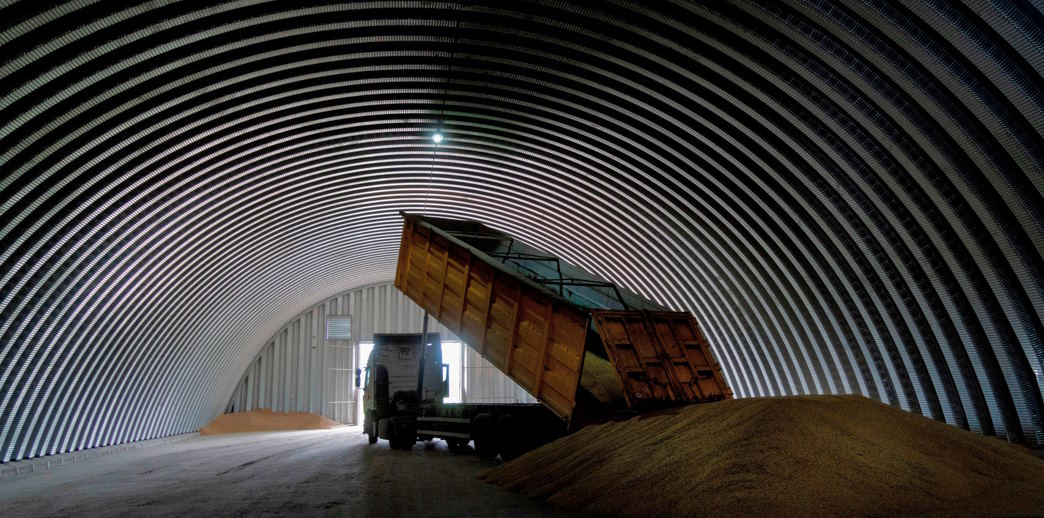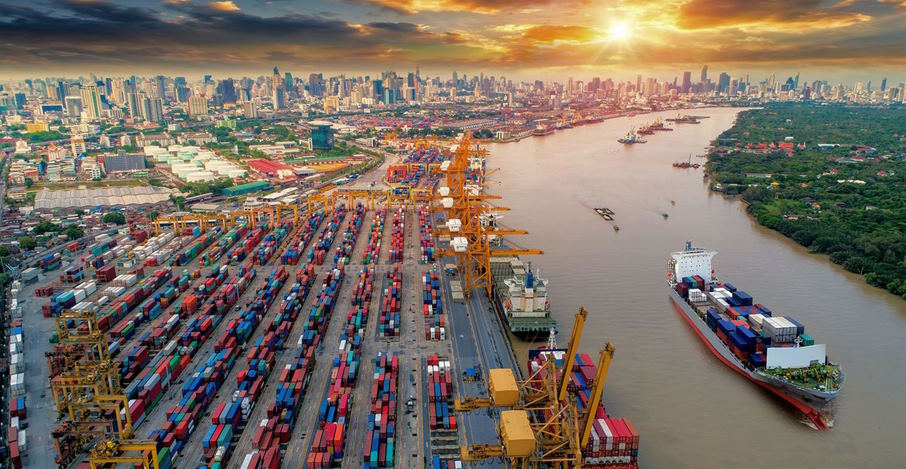Efficient and reliable infrastructure plays a pivotal role in the success of food exports, enabling countries to meet the demands of a globalized market. In an era where international trade in agricultural products is booming, the state of infrastructure has become a critical factor in determining a nation’s ability to compete and thrive. From robust transportation systems and state-of-the-art storage facilities to advanced digital networks, the quality and adequacy of infrastructure directly impact the speed, safety, and cost-effectiveness of food export processes.
Infrastructure gaps and challenges:
Inadequate transportation networks:
One of the key infrastructure challenges in food exports is the lack of efficient transportation networks. Many regions suffer from insufficient road and rail networks, hampering the smooth movement of goods from production areas to markets and ports. Limited road connectivity not only increases transportation costs but also results in delays and inefficiencies in the supply chain. Moreover, the limited capacity of ports adds to the congestion and further delays the shipment of agricultural products, impacting their freshness and quality.
Lack of cold storage and warehousing facilities:
Proper handling and preservation of perishable goods are crucial for maintaining their quality during transportation. However, the lack of adequate cold storage and warehousing facilities poses a significant challenge in many regions. Without proper infrastructure, perishable items such as fruits, vegetables, and dairy products are susceptible to spoilage and deterioration. The absence of temperature-controlled environments leads to substantial losses and wastage, affecting both the profitability of farmers and the availability of quality food in the export market.
Poor irrigation systems:
Agricultural productivity heavily relies on reliable water supply and efficient irrigation infrastructure. However, inadequate irrigation systems pose a significant challenge in many food-exporting regions. Insufficient water supply and outdated irrigation infrastructure result in decreased crop yields and compromised quality. The lack of proper irrigation infrastructure not only limits the agricultural potential but also hinders the ability to meet export demands consistently, impacting the competitiveness of these regions in the global food trade.
Digital divide and connectivity issues:
In today’s digital age, connectivity plays a crucial role in ensuring smooth operations and effective supply chain management. However, certain regions face the challenge of a digital divide, with limited access to the internet and technology. This hampers communication, collaboration, and access to vital information in the export process. Additionally, inadequate data management and tracking systems hinder efficient inventory management, traceability, and compliance with international standards, making it difficult to meet the stringent requirements of importers and regulatory bodies.

Implications of infrastructure gaps on food exports:
Increased transportation costs and delays:
Infrastructure gaps in transportation networks directly impact the cost and efficiency of food exports. Insufficient road and rail systems result in longer travel times and increased transportation costs, making it challenging for exporters to remain competitive in the global market. Delays in the movement of goods not only lead to higher expenses but also compromise the freshness and quality of perishable products. These increased costs and delays can discourage potential buyers and limit the profitability of food exporters.
Loss of perishable goods due to inadequate storage facilities:
The lack of proper cold storage and warehousing facilities has severe consequences for the export of perishable goods. Without adequate infrastructure, the quality and shelf life of products such as fruits, vegetables, and seafood are compromised. This leads to significant losses as a result of spoilage and wastage during transportation. The inability to store and preserve perishable goods effectively not only affects the profitability of farmers and exporters but also limits the availability of high-quality food in the export market.
Reduced agricultural productivity and quality:
Infrastructure gaps in irrigation systems have a detrimental impact on agricultural productivity and quality. Insufficient water supply and outdated irrigation infrastructure hamper crop yields, leading to lower productivity and compromised quality. This can result in the inability to meet export demands consistently, reducing the competitiveness of food-exporting regions. Additionally, inadequate infrastructure for pest and disease control further contributes to a decline in agricultural productivity, impacting both the quantity and quality of food available for export.
Limited market access and missed opportunities:
Infrastructure gaps directly affect market access and opportunities for food exporters. Inadequate transportation networks, storage facilities, and digital connectivity hinder the ability to reach international markets efficiently. Exporters may face barriers in accessing remote markets or struggle to meet delivery deadlines, leading to missed opportunities for trade expansion. Furthermore, insufficient infrastructure restricts the adoption of technological advancements and supply chain innovations, limiting the ability to respond to evolving market demands and preferences.

Addressing infrastructure gaps:
Government initiatives and investments:
Governments play a vital role in addressing infrastructure gaps by initiating and funding development projects. Allocating funds specifically for infrastructure improvements is crucial to bridge the gaps in transportation, storage, irrigation, and digital connectivity. By investing in road and rail networks, expanding port capacity, and establishing cold storage facilities, governments can enhance the efficiency and competitiveness of food exports. Additionally, fostering public-private partnerships can leverage private sector expertise and resources to accelerate infrastructure development, ensuring sustainable and effective solutions.
International cooperation and aid:
International cooperation and aid are instrumental in addressing infrastructure gaps, particularly in developing countries. Collaborative efforts between governments, international organizations, and donor countries can provide financial and technical support to improve infrastructure. By sharing best practices, knowledge, and resources, countries can learn from successful infrastructure development models and implement appropriate strategies. International cooperation also helps to mobilize funding and resources for large-scale infrastructure projects, enhancing the capacity of food-exporting regions to meet international standards and requirements.
Technological advancements and innovation:
Leveraging technological advancements and innovation is essential for addressing infrastructure gaps. Implementing digital solutions can revolutionize logistics and supply chain management, enhancing the efficiency and traceability of food exports. Technologies such as Internet of Things (IoT), blockchain, and data analytics can optimize transportation routes, improve inventory management, and ensure product integrity. Digital platforms and e-commerce systems facilitate direct trade and market access, reducing dependence on traditional distribution channels. Embracing technological innovation enables food exporters to overcome infrastructure limitations and maximize the potential of digital connectivity, promoting transparency, efficiency, and sustainability in the export process.
